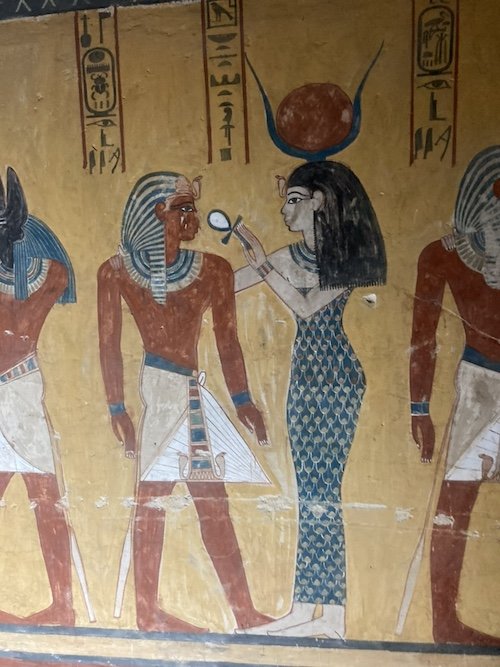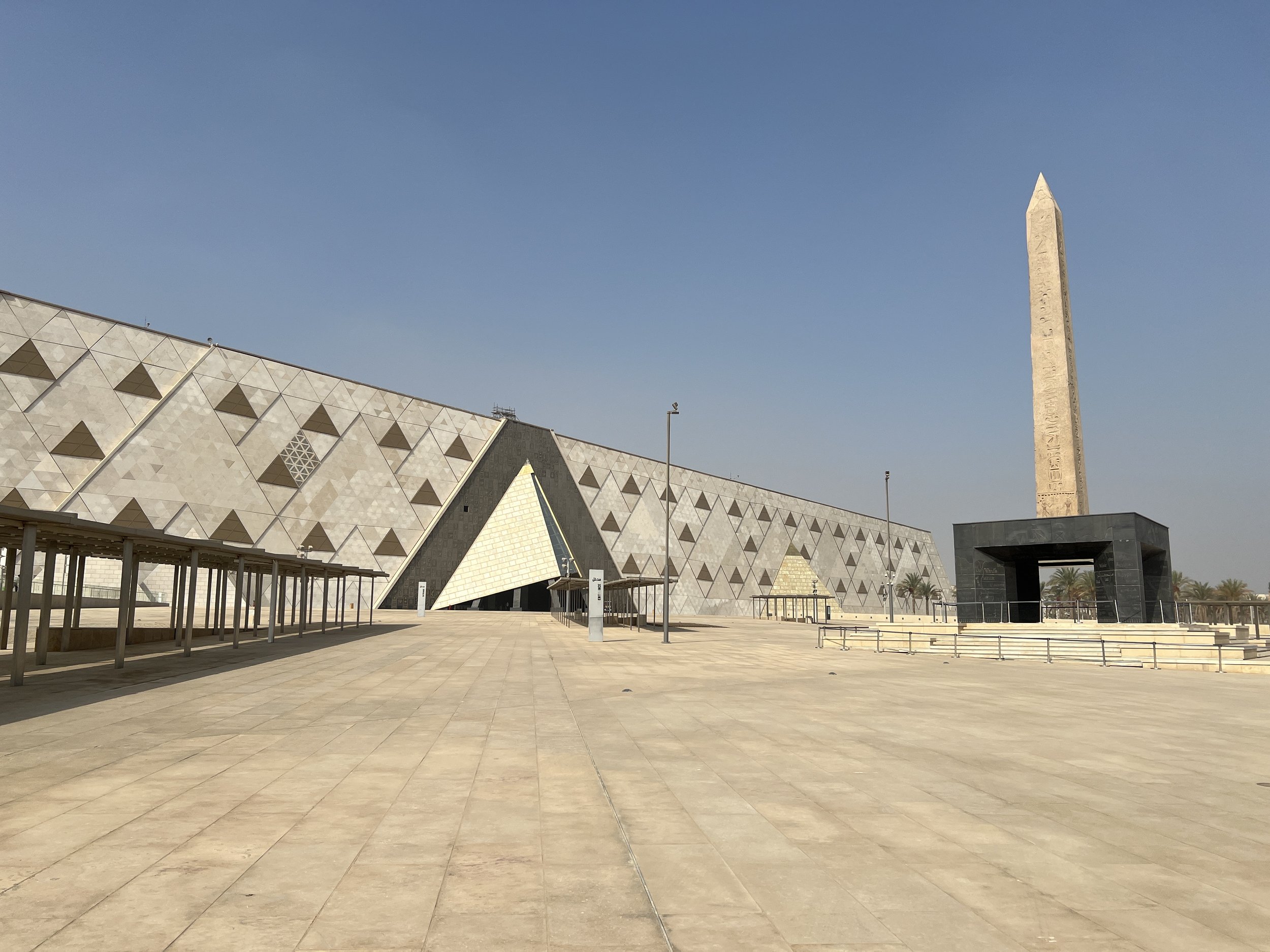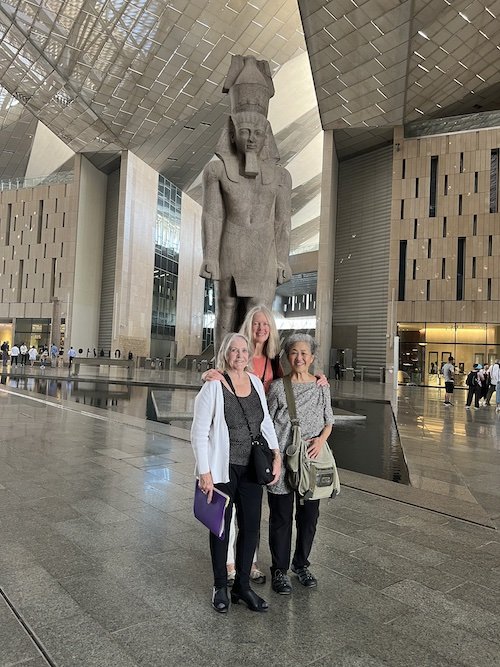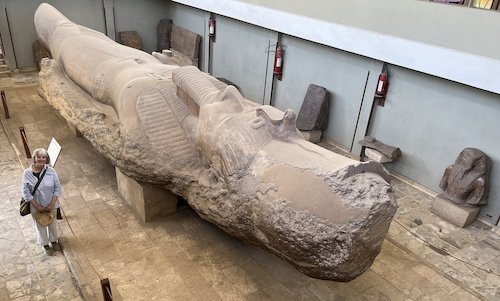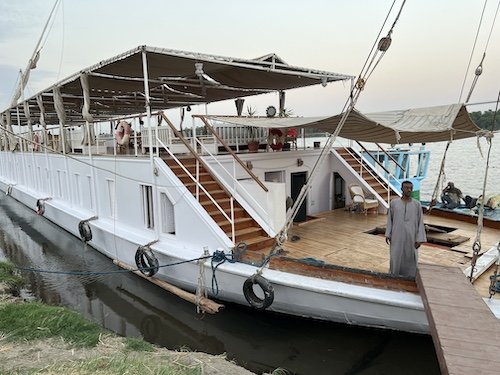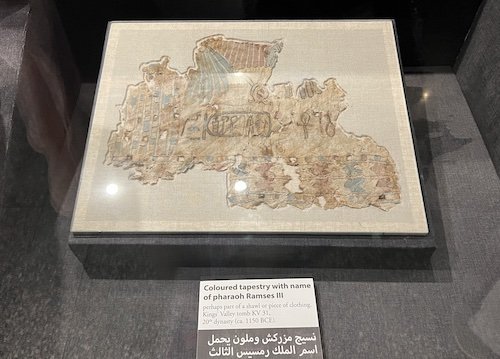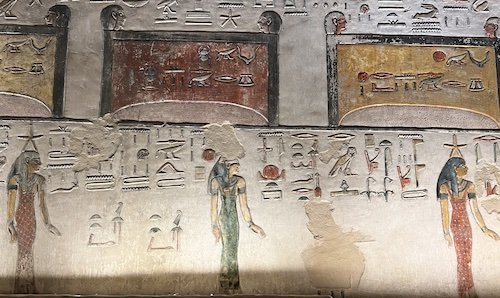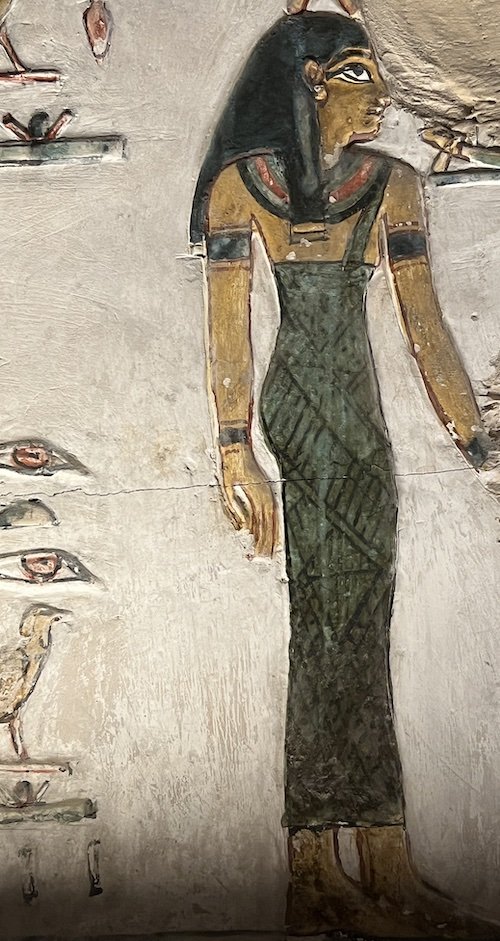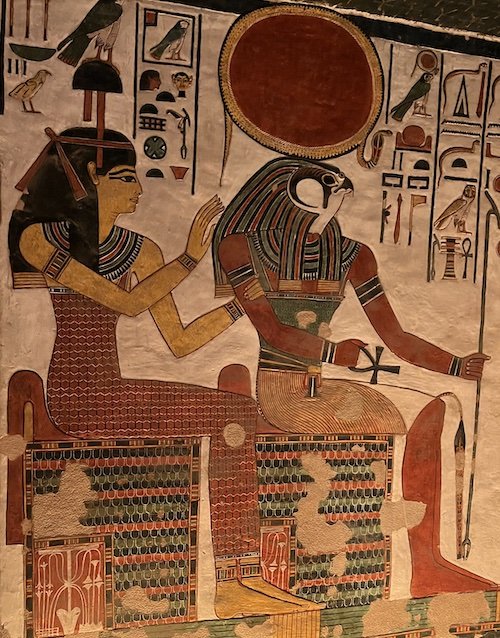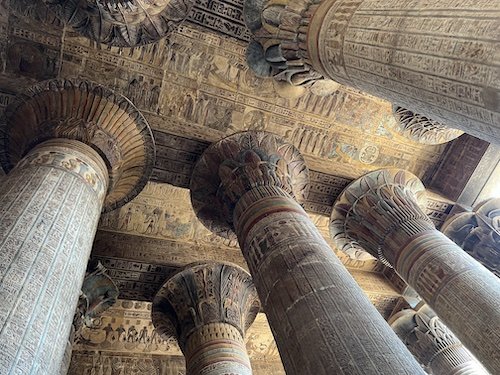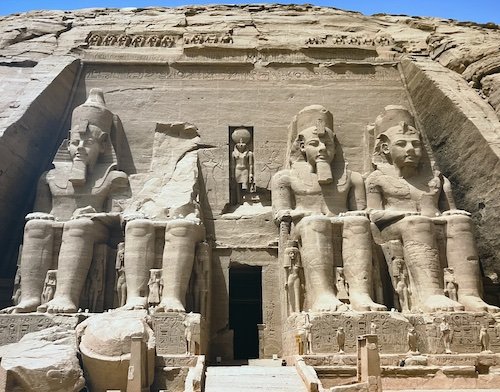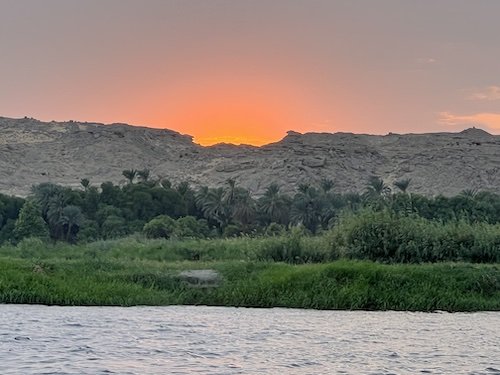Exploring Egypt - The Ancient
Returning to Egypt 45 years after my last time there was an eye-opening experience of how much growth has taken place and how much has changed. But at the same time, there are places there that are seemingly eternal, and I also found a spirit in the people and in the land that felt to me like coming home again.
Naturally, we visited all the places that one must on a trip to Egypt - the Pyramids and Sphinx, the mosques and museums, the temples and tombs. And we had the special privilege on this journey of having Nancy Arthur Hoskins, longtime researcher, writer and expert on ancient Egyptian textiles sharing her knowledge with us every step of the way.
Over the past four decades Nancy has made many trips to Egypt and other places in the world to study examples in museum collections of textiles from Pharaonic, Coptic, and early Islamic time periods. She has also studied the carvings and paintings in temples and tombs throughout Egypt to find patterns that could have come from woven textiles, and has woven her own samples to show how she believes they were indeed woven.
She has shared her extensive knowledge on Coptic textiles in her book The Coptic Tapestry Albums and on the weaving techniques used in ceremonial textiles as seen in the tombs and temples in Egypt in her book Weft-Faced Pattern Weaves.
Nancy has also published a series of in-depth articles on her research of the textile patterns found in Pharaonic temples and tombs in the Complex Weavers Journal over the past ten years. In addition to background information about the sites and the paintings, each article has photographs of the tomb paintings, Nancy’s drawings that she created by tracing over photographs, and her reproduction samples woven from the images.
As an example, in Issue 111 from June 2016 she shares a number of paintings and her textile samples from the tomb of Thutmosis IV (who ruled Egypt from 1401-1391 BCE). One example in this article is an image of the goddess Hathor offering the ‘breath of life’ in the form of an ankh to Thutmosis IV that is found on the Well Chamber Wall-
photo credit: Nancy Arthur Hoskins
From this photo Nancy created the following tracing and reproduction weft-faced weaving -
Between our Egyptian guide, Ahmed Hakim, sharing his deep knowledge of the history of all the sites we visited and Nancy sharing the benefit of all her research and study of the ancient Egyptian textiles, my eyes were opened up to a much deeper awareness and appreciation of what we were seeing than I had before or would have known on my own. We visited so many places in our two and a half weeks in Egypt that I filled a journal with my observations. I am just going to share here a brief listing and a few photos of some of the many wonderful things we saw.
Before our tour even officially began, Nancy, Barbara Setsu Pickett and I had a very special treat. The new Grand Egyptian Museum and its exhibits hasn’t opened yet, but we were able to get tickets to access the exterior spaces and gardens, and the Grand Hall with a 36-foot high statue of Ramses II. Getting to see the suspended obelisk in the courtyard and the statue of Ramses was worth the trip there in itself, so I can only imagine how wonderful it will be when the exhibits are open.
Other museums and sites that we visited in and around Cairo include -
A visit to the original Cairo Museum
The Citadel, built by Salah ad-Din in the 12th century AD, and the Muhammed Ali Mosque on its grounds
The Mosque and Madrassa of Sultan Hassan
The Museum of Islamic Art, which included some early Islamic textiles
A ride out to Memphis, which was an ancient capital of Lower Egypt, with the giant recumbent statue of Ramses II
A trip out to Saqqara, which was the necropolis for the ancient capital of Memphis. The oldest pyramids and mastaba tombs are here, including the famous step pyramid of King Djoser
The Pyramids and Sphinx on the Giza plateau, of course!
The wonderful Museum of Egyptian Civilization. with many textiles and other artifacts, and a beautiful exhibit of the mummies of the Royals
The Hanging Church in Old Cairo
The Coptic Museum, with its wealth of tapestry fragments
After our days in Cairo we took an overnight train to Qena, a small town north of Luxor, in order to visit the outstanding Dendera complex with the Temple of Hathor.
From Dendera we traveled to Luxor and took a small motorboat across the Nile to board our beautiful dahabiya boat, the ‘Scarab’, to spend the next week. This was our home base for exploring Luxor, the Valley of the Kings, and many sights and sites along our leisurely way to Aswan.
Before starting up the Nile we spent a couple days docked on the west side of the river across from Luxor. On our first day we visited the vast and spectacular Karnak Temple complex in modern-day Luxor, and spent several hours wandering among the statues, pillars and obelisks that towered over our heads.
That left us time later in the afternoon to visit the small, but exquisite Luxor Museum. Among a wealth of beautifully preserved statues were a rare tapestry fragment containing the name of Ramses II and a coffin with a beaded mummy cover.
The next day was devoted to spending time on the west side of the river, beginning with the Valley of the Kings. We had our choice to visit up to three of the tombs there, but aside from the tomb of Horenheb, I chose to spend most of my time there in the tomb of Sety I, who was a pharaoh during the 19th Dynasty in the 13th century BCE. This is one of the largest tombs in the Valley with some of the most beautifully preserved paintings.
A special treat came when just a few of us were left in the farthest chamber of the tomb. We could see that there were some particularly beautiful paintings in a side room that was roped off, and Nancy said she had never had an opportunity to go inside that room. An Egyptian man who was keeping watch on that part of the tomb asked us if we would like to go inside, and he took the rope down so we could enter.
There were whole rows of goddesses wearing gowns with beautiful textile patterns and in colors that looked like they were just as pure as when they had been painted.
Later we visited the spectacular Temple of Queen Hatsepshut, and then traveled over to the Valley of the Queens for a special entry to the tomb of Queen Nefertari, which was a feast of paintings with a wealth of detailed textile patterns.
The next day we began our boat trip up the Nile, enjoying the slowly unfolding tapestry of life along the banks of the river, and stopping periodically to visit more temples and other sites along the way, among which were -
Esna Temple, with its ornately carved and painted columns and ceilings
The Temple of Horus, which is second in size only to the Karnak Temple
The rock quarry and shrines at Gebel Al-Silsila
The Temple at Kom Ombo, including a small museum of mummified crocodiles
Our evenings on the Nile included a lovely buffet dinner on the upper deck, and often a slideshow afterwards with Nancy sharing more images and information about her research and weavings from studying the temple and tomb paintings.
For our last day on our boat there was an optional side trip to Abu Simbel, which is a very special site that was built by Ramses II into the side of a cliff on the southern border of Egypt with Sudan. When the Aswan Dam was built in the 1960’s a number of ancient buildings were destined to be submerged in the Nile, including Abu Simbel.
The story of the effort involved in moving this monument is quite remarkable. I highly recommend the book ‘Empress of the Nile’ by Lynne Olson, to read about an amazing French woman, Christiane Desroche-Noblecourt, and her heroic efforts that helped to bring this about.
That night we took a small boat over to the island of Philae to experience a sound and light show at the Temple of Isis. It was a lovely and fitting ending to our wonderful week on the Nile.
This has been a whirlwind overview of an amazing journey through thousands of years of history in an important part of the world. In my next blog post I will share some of what we experienced in the course of visiting textile artisans who are keeping traditions alive in Egypt today. But for now, I will just say goodnight and dream of a magical week on the Nile.




